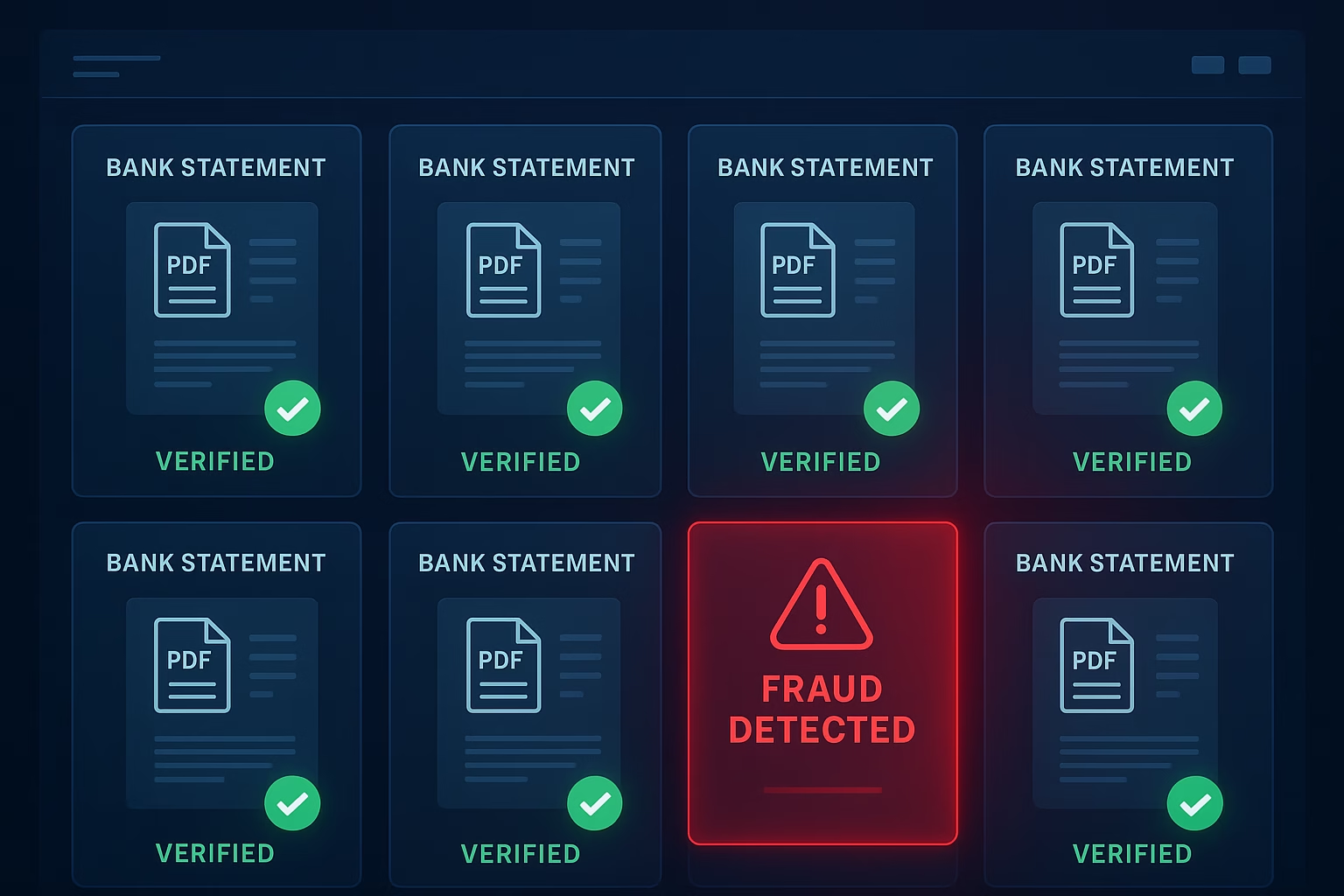Loan applications today rarely arrive with just one document. Borrowers often submit multiple bank statement PDFs, along with GST returns, invoices, and ID proofs. On the surface, these look like a complete financial picture.
Lenders typically upload them into financial analysis software, extract data, and evaluate creditworthiness. But here’s the catch—not every PDF tells the truth.
Fraudsters are now using free editing tools to manipulate PDF bank statements—inflating business revenue, hiding liabilities, or even creating fake accounts. One falsified file can lead to a bad loan, regulatory scrutiny, or worse, long-term reputational damage.
This is why validating bank statement PDFs before approvals is no longer optional—it’s a best practice.
What Is a Bank Statement Analysis API?
A Bank Statement Analysis API is an automated solution that lenders plug into their digital lending workflow. Instead of relying on manual checks, the API can:
- Extract structured data from PDF bank statements and related documents,
- Verify the authenticity of each file in seconds, and
- Flag anomalies or suspicious patterns for underwriters.
In fact, with India reporting a 42% jump in banking frauds in FY2023 (RBI data), such tools are no longer “nice to have”—they’re essential for survival.
For more examples of how this helps catch falsified documents, see our post on Prevent Loan Fraud with Smart Bank Statement Analyser Tool.
How Bank Statement PDF Validation Works
Here’s a breakdown of how modern APIs ensure lenders process only authentic files.
1. Upload and Scan PDFs
When borrowers submit bank statement PDFs, GST returns, or credit bureau reports, the system immediately runs a validation check. Every document is stored securely in the cloud and compared against a trusted digital library.
2. Check the Document DNA
Every PDF carries hidden details—metadata such as:
- Creator/producer
- Created/modified timestamps
- Fonts and text encoding
Any mismatch with authentic files signals possible tampering.
3. Generate Authenticity Outcomes
Within seconds, the dashboard displays one of four outcomes for each bank statement PDF:
- ✅ Original – No tampering detected
- ❌ Fraud – Confirmed manipulation
- ⚠️ Review – Mixed signals, manual verification required
- ❓ Unknown – Insufficient data for validation
This empowers lenders to quickly decide whether to continue processing or request additional proof.
4. Spot Suspicious Transactions
Validation doesn’t stop at metadata. Advanced APIs also analyse transaction data inside PDF bank statements. Common red flags include:
- RTGS payments under ₹2 lakhs (used to bypass thresholds)
- Round-figure tax payments (indicating synthetic entries)
- Cheques deposited on bank holidays
- Salary credits followed by immediate large withdrawals
- The same counterparty in both debit and credit transactions
- A mismatch between actual and computed balances
These checks expose borrowers attempting to game the system through more subtle means.
Some of these match the warning signs we explore in “5 Red Flags to Watch for in Bank Statements Before Approving a Loan“

Why Validating Bank Statement PDFs Matters
1. Prevent Loan Fraud & NPAs
Fraudulent borrowers can push lenders into issuing risky loans that quickly turn into non-performing assets (NPAs). Detecting fraud early stops revenue leakage.
2. Ensure Compliance
Regulatory bodies demand strict due diligence. Automated validation of PDF bank statements keeps lenders compliant and avoids costly penalties.
3. Protect Reputation
A single case of loan fraud can spark negative press, erode trust, and even affect stock prices of listed NBFCs. Validation safeguards brand image.
4. Drive Profitability
By focusing only on genuine customers, lenders speed up approvals, improve customer experience, and boost long-term profitability.
Our take on AI vs human judgment helps explain why flagged documents should still be evaluated carefully.
Benefits Beyond Fraud Prevention
The value of authenticating PDF bank statements goes beyond security. Lenders also gain:
-
Operational efficiency → Automated validation reduces manual workload.
-
Scalability → Thousands of documents can be processed at once.
-
Error reduction → Eliminates human oversight, ensuring consistent decisions.
- Actionable insights → Clean, validated data feeds directly into underwriting models.
This speed and scalability are showcased in our detailed post on ‘Bank Statement Analysis Software for Fast & Accurate Insights.
The Key Takeaway
Fraudulent bank statement PDFs are one of the fastest-growing threats in digital lending. Manual checks won’t cut it anymore.
By adopting a Bank Statement Analysis API, lenders can:
- Instantly validate every PDF,
- Detect subtle tampering attempts, and
- Confidently underwrite loans without fear of fraud.
Pro Analyser provides lenders with one of the most advanced bank statement analysis software available. From authenticity checks to transaction-level insights, our platform simplifies verification and accelerates lending decisions.
Integrate our Bank Statement Analysis API into your workflow to automate document checks, prevent fraud, and accelerate lending decisions.
Ready to protect your lending workflow? [Try Free Trial].



